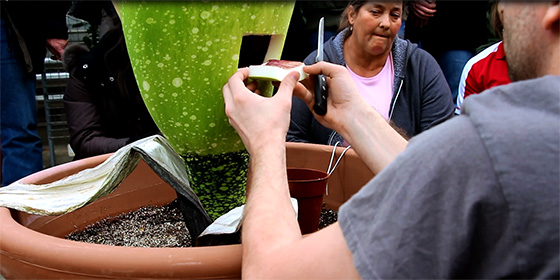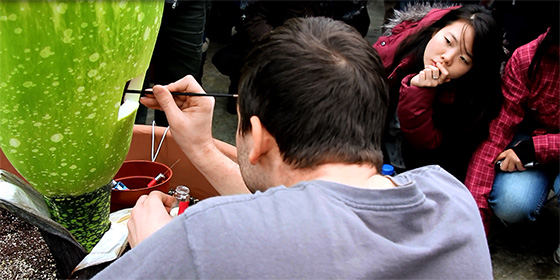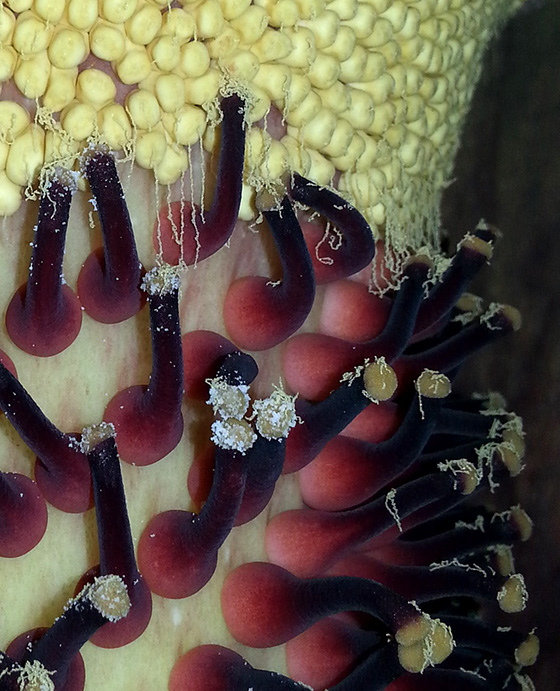Thursday morning, Plant Biology PhD candidates Gwynne Lim and Kyle Martin and greenhouse grower Kendra Hutchins hand-pollinated Wee Stinky.

Martin cut a small window through the rind-like tissue at the base of the spathe (much like carving a pumpkin) for better access to the female flowers at the base of the spadix. They dusted the receptive female flowers with pollen collected from Wee Stinky the last time it flowered in March 2012 and stored at -80 Celsius to help maintain its viability.

They taped the hunk of rind back into the window when they were finished to help maintain moisture levels inside the chamber.
Titan Arums do not naturally self-pollinate. Because the male flowers don’t shed their pollen until after the female flowers on the same plant are no longer receptive, such unions are separated by time. By artificially self-pollinating the plant, researchers hope to find out if there is also some genetic or chemical barrier that prevents this species from ‘selfing’.

Later in the day when the female flowers were no longer receptive, male flowers began to shed their pollen. Students and growers harvested a bumper crop to store and share when other researchers and institutions need Titan arum pollen for cross-breeding.



